Are you ready to turn your backyard into an oasis of vibrant colors and beautiful textures? With vinca gardening, you can bring the outdoor paradise of your dreams to life.
And there are so many options to choose from – overflowing ground cover gardens, cascading hanging baskets, and potted arrangements full of eye-catching color – the possibilities are truly endless!
In this blog post, we’ll explore some unique ideas for adding a touch of pizzazz to any garden with a few easy vinca garden projects. So get ready, grab your trowel and spade, and let’s get planting!
Where to Plant?
Vinca vines grow best in moist, well-draining soil and prefer sunny or partially shaded spots. Before starting your project, consider where you’d like to install it and plan accordingly. You can also use raised beds or containers if the space is limited.
Types
Companion Plants
Vinca comes in a variety of shapes and sizes, so you’ll want to consider what type of plant will work best for your project.
When choosing companion plants, remember to consider the type of soil and lighting as well as the final look you’d like to achieve.
Consider adding other flowering perennials such as lavender, pansies, or coreopsis for an extra pop of color. To fill in gaps between larger plants and create a fuller look, you can add ground covers such as ajuga or creeping thyme.
Garden Plans
Once you’ve chosen your plants, it’s time to start planning out your garden design. Draw a basic plan and decide where each type of plant will go.
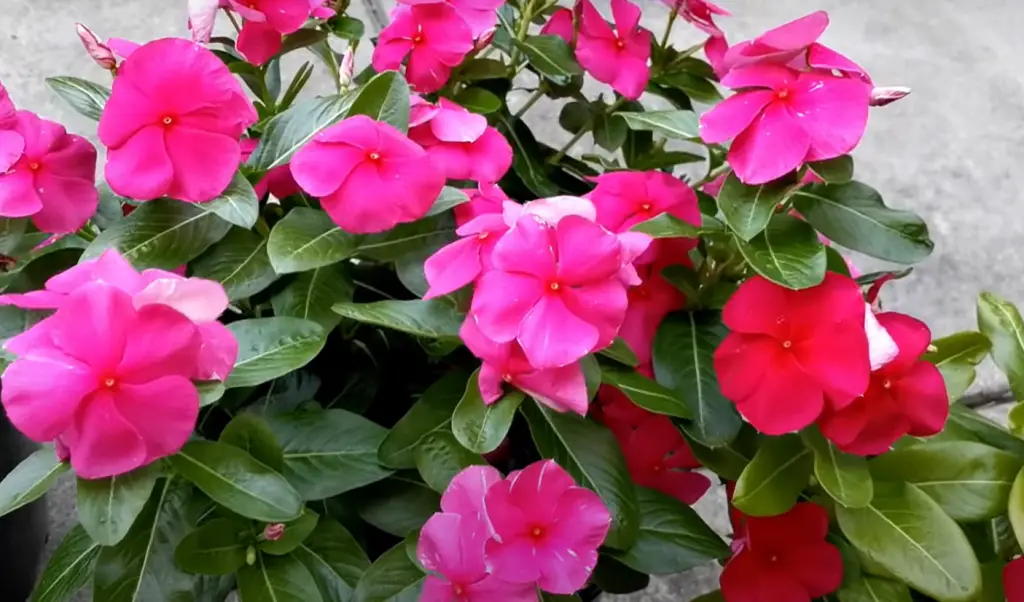
Consider the height of different plants when browsing for vinca options, as some varieties may be too large or small for certain spots. When in doubt, look up the plant’s height in a horticultural reference book or online.
Vinca Garden Ideas
Hanging Baskets
Create an eye-catching and unique look by planting a vinca vine in a hanging basket. Choose a basket with an adjustable chain or rope so you can easily move it around your garden. You can also add other flowers, such as petunias, to the mix for added color and texture.
Ground Cover
Vinca makes a great low-maintenance ground cover for sunny or partially shaded areas. Simply plant the vines in well-draining soil, water lightly every few days, and watch as your backyard comes alive with color!
Potted Arrangements
For an easy way to add a touch of color to any area, try creating a potted vinca arrangement. Choose your favourite vinca varieties and other flowers, such as roses or daisies, to create a vibrant display. Then place the pots around your garden for instant impact!
Container Gardening
If you’re short on space or prefer a more tailored look, try container gardening with vinca. Plant several vines in large containers and place them around your garden for an instant pick-me-up. You can also add other plants for a fuller look.
Planting Tips
When planting vinca, it’s important to start with healthy plants. Check for pest or disease damage and make sure the roots are of good quality before planting. It’s also a good idea to amend the soil with compost or other organic matter to help ensure optimal growing conditions.
Once planted, water your vinca regularly and feed with slow-release fertiliser every few months. Prune plants as needed to keep them looking neat and tidy. With a little bit of care, your vinca garden will be the envy of the neighbourhood!
Care and Maintenance
Vinca is low-maintenance, but some basic care is required to keep your garden looking its best. Water regularly, feed with slow-release fertiliser every few months, and prune as needed. Check for pest or disease damage and remove any affected vines immediately.
Pests and Problems
Vinca is generally resistant to most pests and diseases, but be on the lookout for aphids and mites.
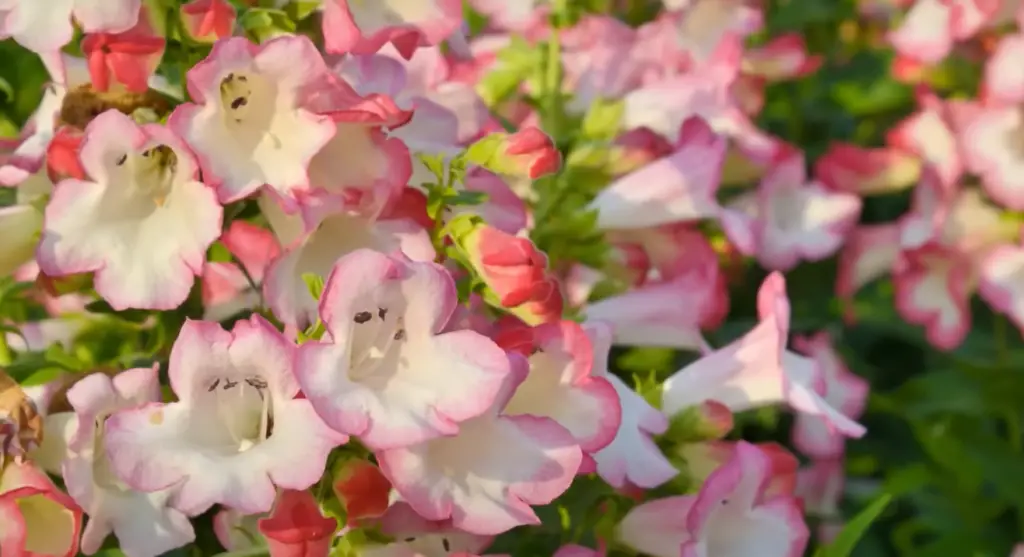
You may also experience problems with root rot if the plants are given too much water or left in standing water. To prevent this, make sure your soil drains well and avoid overwatering.
Propagation
Vinca is easily propagated from cuttings. Simply snip off a few stems, plant them in moist soil, and wait for new roots to grow. You can also take advantage of vinca’s self-seeding nature by letting the vines go to seed. The new plants will emerge along with existing ones next season!
With these Vinca Garden Ideas, you can create stunning displays that are sure to turn heads. So get creative and enjoy your vibrant vinca oasis!
FAQ
What looks good with vincas?
Vincas look great when paired with other flowers such as roses, petunias and daisies. They can also be used as a ground cover or planted in hanging baskets for a unique display.
What is the best soil for vincas?
Vincas prefer well-draining soils that are rich in organic matter. Amend the soil with compost or other organic matter to ensure optimal growing conditions.
Are vincas easy to care for?
Yes! Vincas are low-maintenance plants that require minimal care. Water them regularly and feed with slow-release fertiliser every few months, and prune as needed. Check for pests or diseases and remove any affected vines immediately.
Can vincas be propagated?
Yes, vincas can be easily propagated from cuttings. Simply snip off a few stems and plant them in moist soil for new roots to grow. You can also take advantage of the plants’ self-seeding nature by allowing the vines to go to seed. The new plants will emerge alongside existing ones next season!
Where is the best place to plant vinca?
Vincas can be planted in the ground or in containers. Place them anywhere you want a splash of color, such as around flower beds, along pathways, or even in hanging baskets. Just make sure they have enough room to grow and get plenty of sunlight.
What is the best fertiliser for vinca?
A slow-release fertiliser such as 10-10-10 or 12-12-12 is best for vinca. Feed plants every few months and follow the instructions on the container to ensure you give them the nutrients they need. You can also add compost to the soil to help promote healthy growth.
Do vincas need to be pruned?
Yes, vincas benefit from pruning. Prune plants regularly to keep them looking neat and tidy.
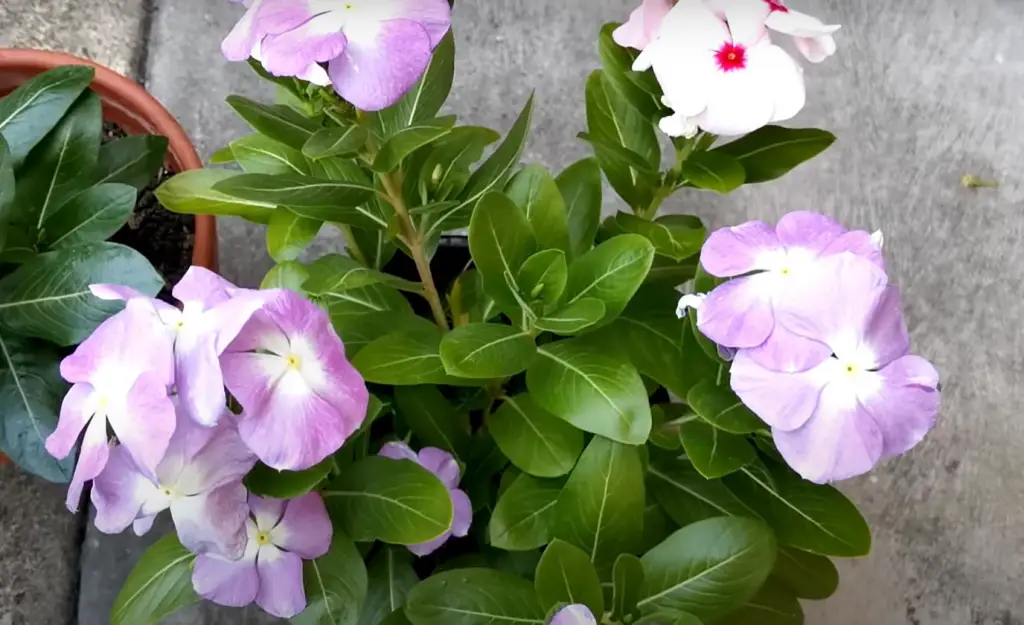
Deadheading spent blooms will also help promote new growth and encourage more flowers. Be sure to use sharp pruners and make clean cuts for best results.
Do vincas do better in the sun or shade?
Vincas prefer full sun for optimal growth and flowering, but will tolerate light shade. Placing them in an area with bright, indirect sunlight is ideal. Avoid planting them in deep shade as this can cause the plants to become leggy and weak.
Will vinca come back every year?
Yes, vinca is an evergreen plant that will come back year after year. Planting in the ground ensures a more permanent display, while container-grown plants may need to be replaced or replanted each season.
Take advantage of its self-seeding nature by allowing the vines to go to seed and new plants will emerge alongside existing ones next season.
What time of day should I water vincas?
Early morning is the best time to water vincas. This gives the plants plenty of time to dry out before nightfall, reducing the risk of disease and pests. Avoid overwatering as this can cause root rot and other problems.
Can I use mulch with vinca?
Yes, mulching around your vinca can help retain moisture and protect the soil from extreme temperatures.
Use organic mulch such as bark chips or compost for best results. Make sure to leave a few inches between the mulch and the base of the plants to prevent root rot.
Do vincas get big?
Vinca vines can grow up to 5 feet tall and spread out several feet. Prune regularly to keep the plants in check and allow enough room for them to grow without becoming overcrowded.
With proper care, your vinca garden will be a stunning display that is sure to turn heads! So get creative and enjoy your vibrant vinca garden!
What else do I need to know about vincas?
Vincas are relatively easy to care for but can be susceptible to pests and diseases if not properly cared for. Make sure to check plants regularly for any signs of infestation or disease and remove affected vines immediately.
Also, take care not to overwater as this can cause root rot. With these few tips in mind, your vinca garden will be a thing of beauty for years to come!
What are some creative ideas for a vinca garden?
There are many creative ways to incorporate vincas into your landscaping. Plant them along pathways or use them as an edging plant around flower beds.
They also make great container plants and can be used in hanging baskets for a beautiful cascade of color. If you have a trellis or an arbour, these can also be a great place to showcase cascading vincas.
What type of soil works best for vincas?
Vincas prefer well-drained, fertile soil. Amend the soil with organic matter such as compost or manure to ensure proper drainage and nutrient availability. A light mulch can also help retain moisture and protect the plants from extreme temperatures.
How often should I water my vincas?
Vincas do best in moist, but not soggy, soil. Water regularly and deeply to keep the roots hydrated. Be sure to check the soil before watering as overwatering can cause root rot and other problems. Let the top few inches of soil dry out between waterings for best results.
Do vincas need to be fertilised?
Yes, an all-purpose fertiliser can help promote healthy growth and abundant blooms. Feed your vincas every six weeks during the growing season with a balanced fertilizer such as 10-10-10 or 5-10-5.
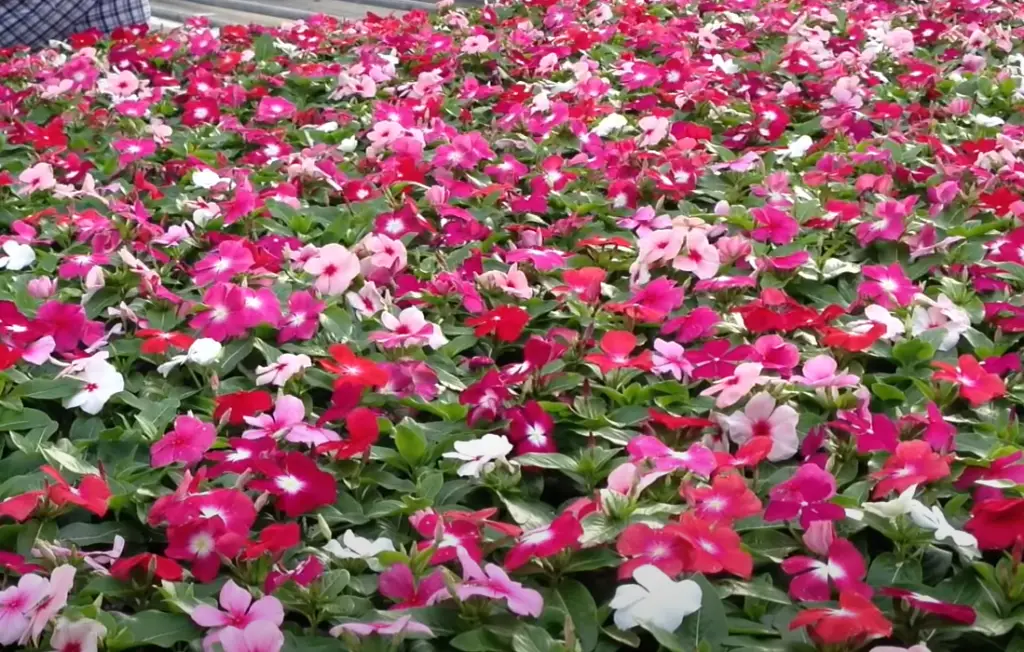
Be sure to follow the instructions on the fertilizer package for best results.
Are vincas deer resistant?
Yes, vincas are generally considered to be deer resistant. However, if a herd of hungry deer is in your area, it’s always a good idea to take extra precautions such as using deer repellents or fencing to protect your plants.
What are the best vinca varieties for my garden?
There are many different types of vincas to choose from, each with its own unique characteristics. For a classic look, try Vinca major or Vinca minor which both have deep green foliage and small white or blue flowers.
For more vibrant colors, check out Vinca Rosea which produces large, hot pink blooms. A newer variety called ‘Cora’ also has vibrant pink flowers and is known for its long-lasting bloom time.
How do I keep my vincas looking their best?
Regular pruning and deadheading can help keep your vinca blooming throughout the season. Prune plants after flowering to encourage new growth and deadhead spent flowers to promote more blooms.
How deep should I mulch around my vincas?
Mulching helps to keep the soil moist, reduce weeds and insulate plants from extreme temperatures.
Apply a layer of organic mulch such as bark chips or shredded leaves about 2-3 inches deep around the base of your vincas. Be sure not to pile mulch up against the stems as this can cause rot.
Why choose vincas for your garden?
Vincas are a great choice for any garden as they add texture, color and interest to the landscape. They are easy to care for and can be used in both sun or shade gardens.
With their vibrant blooms, beautiful foliage and long-lasting beauty, vincas make a stunning addition to any garden.
Why should I take care of my vincas?
Vincas are relatively easy to care for as long as you stick to a few simple guidelines. Make sure to water regularly, fertilise and prune as needed. Also, keep an eye out for signs of disease and remove affected vines immediately.
Does vinca need to be pruned?
Yes, vincas should be pruned regularly to encourage healthy growth and abundant blooms. Prune vines after flowering or in early spring to remove any dead or diseased growth.
Also, try to keep the plants from becoming too dense by removing overcrowded stems. Doing this will help promote air circulation and reduce the risk of disease.
When should I start planting vincas?
Vincas are best planted in the spring when all danger of frost has passed. Planting earlier in the season will give your plants more time to establish their roots before the summer heat arrives.
Be sure to water regularly during establishment and throughout the summer months.
Do vincas need to be deadheaded?
Yes, regular deadheading can help your vinca look its best by promoting more blooms.
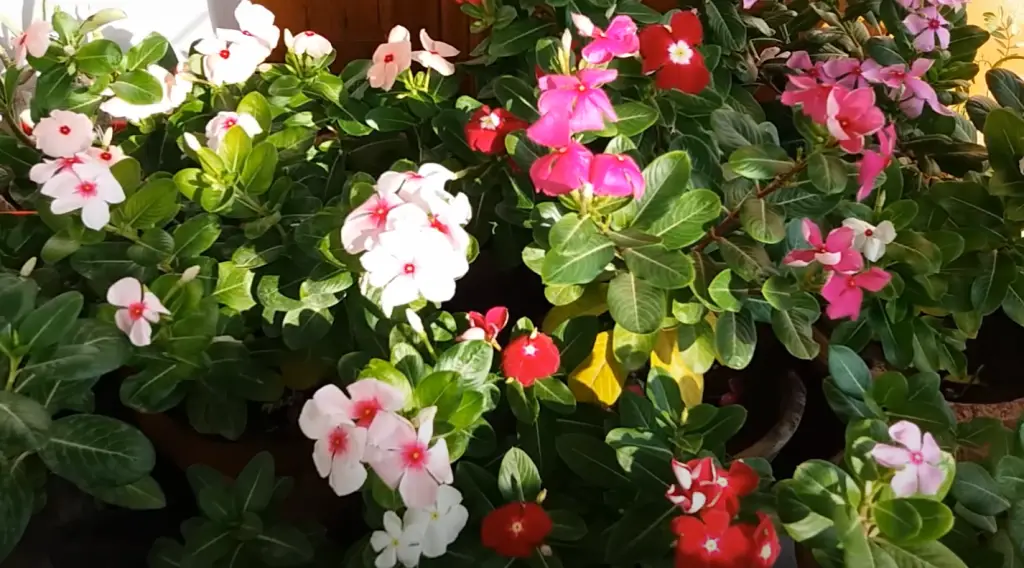
Deadhead spends flowers as soon as they fade and try to remove any diseased or damaged stems throughout the season. Doing this will help keep your plants healthy and looking great all summer long.
Does vinca need to be fertilised?
Yes, regular fertilising with a balanced fertilizer such as 10-10-10 or 5-10-5 will help promote healthy growth and abundant blooms. Feed your vincas every six weeks during the growing season according to the instructions on the fertilizer package for best results.
Do vincas need pest control?
Vincas are relatively pest-free but can be susceptible to aphids and spider mites in certain conditions.
Also, keeping your plants healthy with regular fertilising and pruning will help to reduce the risk of pest infestations.Should I water my vincas?
Yes, vincas need regular watering in order to thrive. Water your plants deeply and evenly about once a week or as needed during dry spells. Over-watering can lead to root rot so be sure not to overwater your plants.
Does vinca need to be divided?
Yes, vincas should be divided every three to four years in the spring or fall. This helps promote healthy growth and abundant blooms by allowing plants to spread out and receive more light and air circulation. To divide your vincas, carefully dig up the plant being sure not to damage any roots.
Then, separate the plant into two or three sections making sure each section has a good amount of root and foliage attached. Replant divided vincas in their new location and water well to help them get established.
What other care does my vinca need?
In addition to regular watering and fertilising, your vinca may also need a bit of extra care to stay healthy and looking great. Mulching around the base of your plants can help retain moisture and discourage weeds.
Also, try to keep soil mounded up against the stems as this can cause rot. Finally, make sure to remove any dead or diseased foliage throughout the season for optimal health.
Does vinca need to be winterized?
Yes, it is important to prepare your vincas for cold winter temperatures. Cut back any remaining foliage in the fall and mound up soil around the base of the plant for extra insulation. This will help protect your plants from extreme low temperatures and give them a head start come spring.
Can I grow vincas in containers?
Yes, vincas can be grown in containers as long as they are well-draining and appropriately sized for the plant. Choose a potting mix formulated for container plants and make sure to water regularly throughout the summer months.
Also, try to bring your containers inside during cold winter temperatures to protect them from frost.
Can I propagate vincas?
Yes, vincas are easy to propagate and can be done by stem cuttings. In the spring or summer when your plants are actively growing, take 3-4 inch stem cuttings from healthy stems and remove any leaves from the bottom half.
Dip the cutting into rooting hormone if desired then place into a potting mix formulated for cuttings. Be sure to keep the soil evenly moist and in a few weeks you should see new growth indicating that your cutting has rooted. Plant into its permanent location once it is well-rooted and established.
Does vinca need a lot of sunlight?
Vincas prefer full sun but can tolerate some light shade. Make sure to provide your plants with at least 6-8 hours of direct sunshine per day for optimal growth and blooms.

In hot climates, try to provide some afternoon shade if possible in order to help protect your plants from the intense heat of the day.
Can I use vincas as a ground cover?
Yes, vincas make great ground covers with their dense foliage and low-growing habit. Plant in areas that receive full sun and don’t need to be mowed or walked on regularly.
These plants can spread quickly so you may want to provide some type of boundary around the garden bed to keep them contained.
Useful Video: How I get A Lot of Flowers on my Vinca Plants | Tips to Get Maximum Flowers!
Conclusion
With a few simple ideas and a bit of creativity, you can transform your ordinary garden into a beautiful Vinca garden.
Whether you plan on planting an array of vivid annual Vincas to add extra splashes of color or want to create a drought-tolerant ground cover out of the perennial variety, there are many exciting options you can explore when it comes to enhancing your outdoor living space with gorgeous and creative plants like the Vinca.
So get started today and create the cheerful garden oasis that is perfect for you! Let us know in the comments section how you have used Vincas in your own garden – we would love to hear your stories!
And don’t forget to share pictures if you have them; they certainly don’t disappoint. Until then, happy Gardening.
References:
- https://www.bhg.com/gardening/plant-dictionary/annual/annual-vinca/










Leave a Reply
View Comments